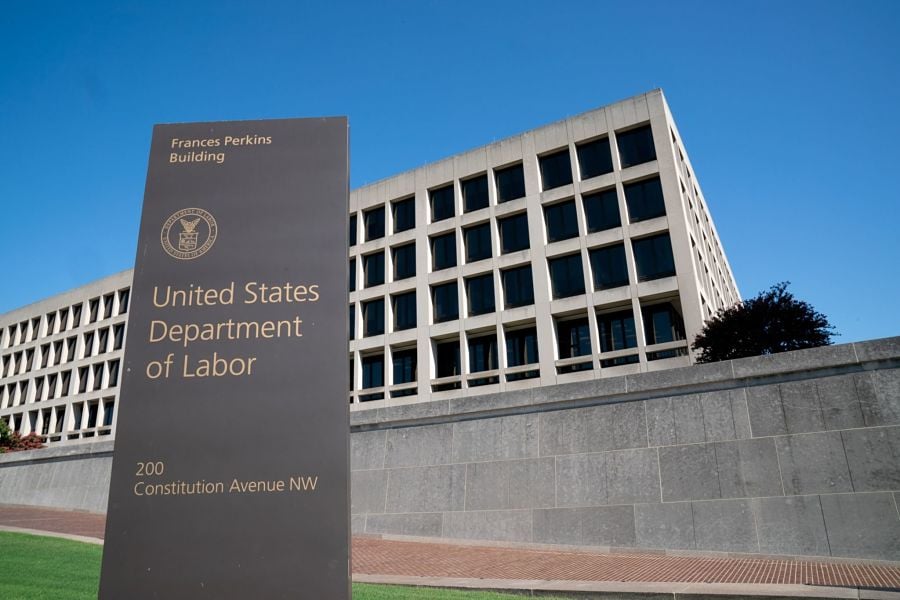

Just over a year after ESG supporters flooded the DOL with a record number of public comment letters, the regulator has been inundated with an opposite response — this time from a mass of the anti-“woke” public.
Monday marked the deadline for submitting comments to the Department of Labor for its proposed regulatory changes that would undo much of the Trump administration’s restrictions on environmental, social and governance considerations in retirement plans.
Of the 256 letters posted through November, the majority were penned by people who expressed anger over a perceived liberal agenda to infiltrate their 401(k)s, forcing them to invest in environmentally and socially minded companies.
“I don't want my retirement money invested in ‘woke’ corporations. This is not right! I want my money invested in what I think will grow it the best,” one commenter wrote. “Stop this craziness! It's not right!”
That tone was consistent across most of the feedback the DOL received, although the agency had yet to post comments that came in between Dec. 1 and Monday. Typically, industry groups do not send their letters to regulators until the last minute, taking time to craft responses and consider issues that might arise just before a comment period closes.
If there was a common thread between commenters’ concerns this year compared to last, it is that people generally do not like what the DOL is doing. But the reasons for their concerns are entirely different, and much of the nuance in what the agency has proposed is lost when the issues are distilled to partisan talking points.
Under the Trump administration, the DOL last year finalized two rules that applied to ESG investments. One applied to “pecuniary” considerations for defined-contribution plans, while the other affected the proxy voting capabilities of pension plans. While the first rule restricted ESG funds from being used as the default investment options in DC plans, it did not expressly prohibit plan sponsors from including such invests on their menus.
Earlier this year, the Biden administration effectively stopped those rules, announcing that they would not be enforced and that the DOL had been directed to revisit them. The agency proposed changes in October, seeking to undo a chilling effect that the rules had on ESG investments.
Critically, the DOL said that ESG factors can be considered financially material. And it made clear that the default investment options in DC plans — usually target-date funds — can use ESG criteria. Further, even when ESG and other factors are financially immaterial, they can be considered as tie-breakers between otherwise similar investments.
Responses from lawmakers were predictably split down party lines. A group of Democratic members of Congress wrote strongly in support of the DOL’s proposed changes, while Republicans characterized the regulatory overhaul as an “attack on retirement savings” that favored “non-financial agendas.”
Meanwhile, the financial services industry’s response was more reserved, but prescriptive. Lobbying and industry groups favor language that allows fiduciaries to consider ESG criteria — but they largely said they do not want those considerations to be mandatory.
The Investment Company Institute, which represents investment providers, asked the DOL to remove references from ESG, “because their inclusion unnecessarily differentiates ESG factors from investment factors more generally.”
“Singling out ESG factors in such a manner is a departure from the long-standing neutral application of fiduciary principles,” the ICI stated.
That group also asked the DOL to kill a disclosure requirement for investments selected on a tie-breaker basis.
“The requirement to prominently display the collateral-benefit characteristic of an investment when it has been selected using the tie-breaker rule … singles out a particular investment strategy for heightened fiduciary disclosure requirements,” the letter read.
Another group, SIFMA, asked the DOL to tone down language about a fiduciary duty of prudence to consider ESG factors.
“As plan fiduciaries and participants seek to maximize risk-adjusted returns, their research may prudently lead them to the conclusion that ESG concerns can drive economic outcomes and/or reduce portfolio risk as part of their overall investment analysis,” the Securities Industry and Financial Markets Association stated. “But it could also lead them to a different result which would entail a focus on different factors.”
Similarly, the Managed Funds Association, which represents hedge fund and alternatives managers, asked the DOL to clarify that ESG should not be a mandatory consideration.
“[M]any ERISA fiduciaries would feel compelled to consider ESG matters or incur substantial compliance costs to justify and document their justifications for why such considerations are not required,” that group stated. “Relatedly, we believe that expressly including three categories of permissible ESG considerations — climate change-related factors, governance factors and workforce practices — in the rule text would likely lead ERISA fiduciaries to conclude that consideration of those categories are effectively mandatory."
Last week, a group of retirement advisory CIOs at the RPA Convergence CIO Roundtable and Think Tank event cited concerns about incorporating ESG, as the categories are loosely defined. From an ERISA investment perspective, some said, there are few guidelines for measuring investment performance as it relates specifically to ESG.
Following a review of public comments, the DOL’s next step is issuing a final version of the rule, which will likely happen in 2022.

Relationships are key to our business but advisors are often slow to engage in specific activities designed to foster them.

Whichever path you go down, act now while you're still in control.

Pro-bitcoin professionals, however, say the cryptocurrency has ushered in change.

“LPL has evolved significantly over the last decade and still wants to scale up,” says one industry executive.

Survey findings from the Nationwide Retirement Institute offers pearls of planning wisdom from 60- to 65-year-olds, as well as insights into concerns.
Streamline your outreach with Aidentified's AI-driven solutions
This season’s market volatility: Positioning for rate relief, income growth and the AI rebound
